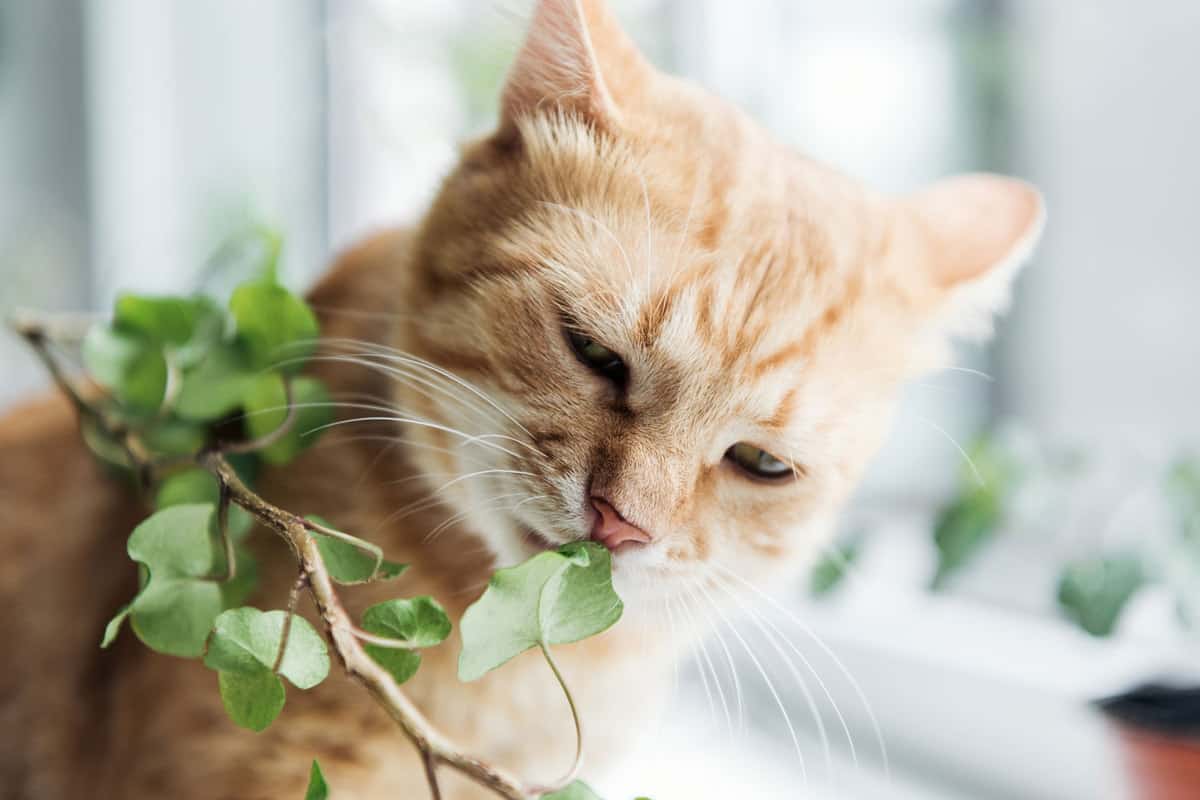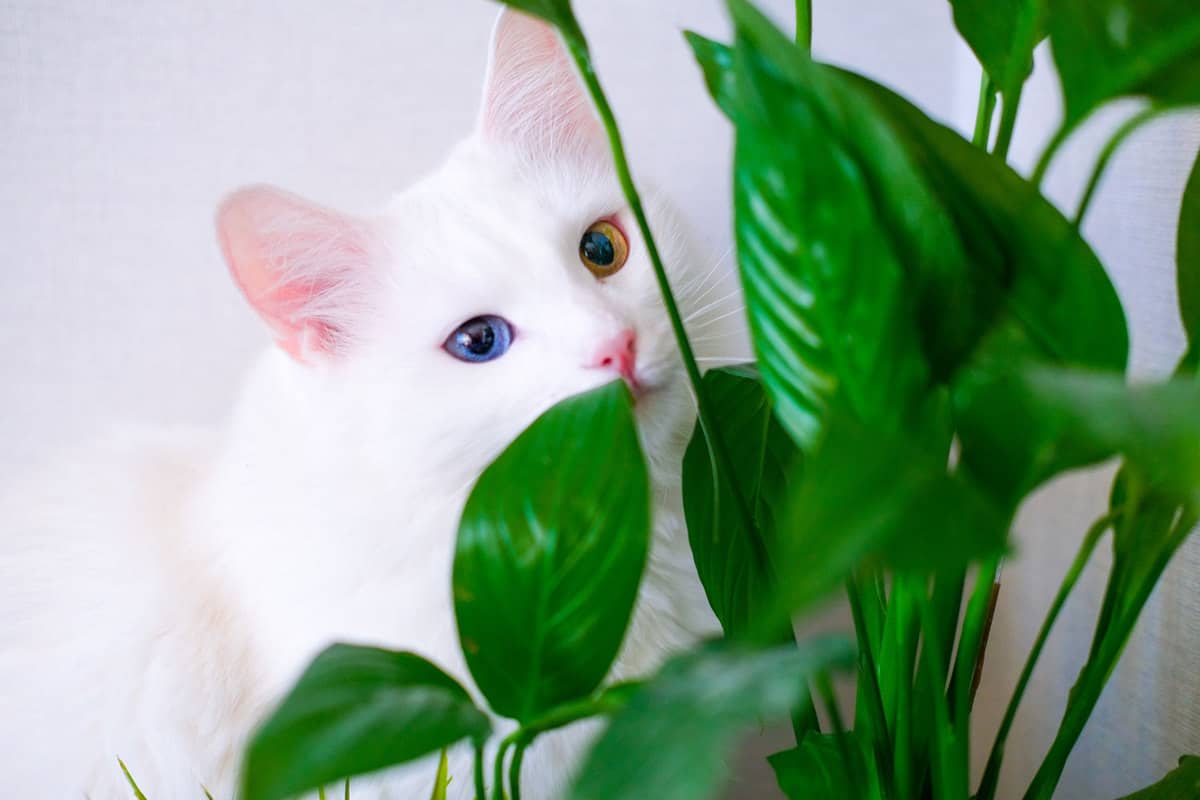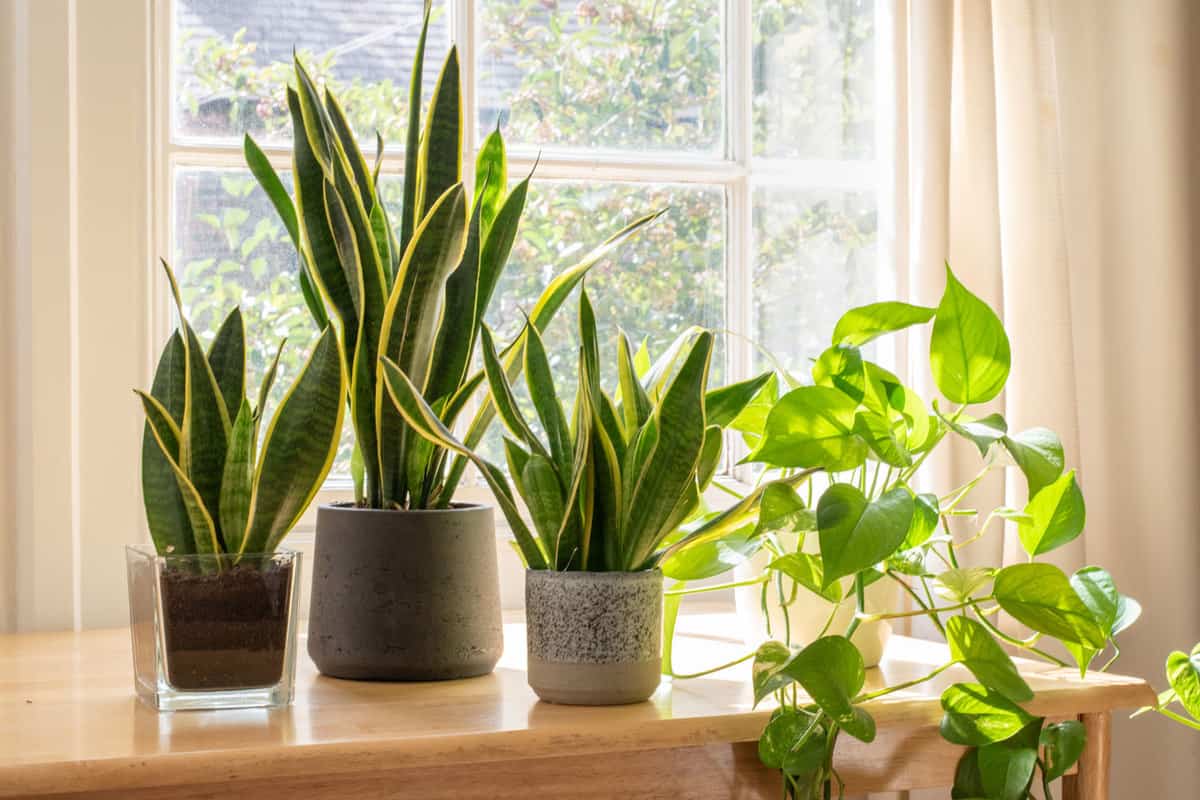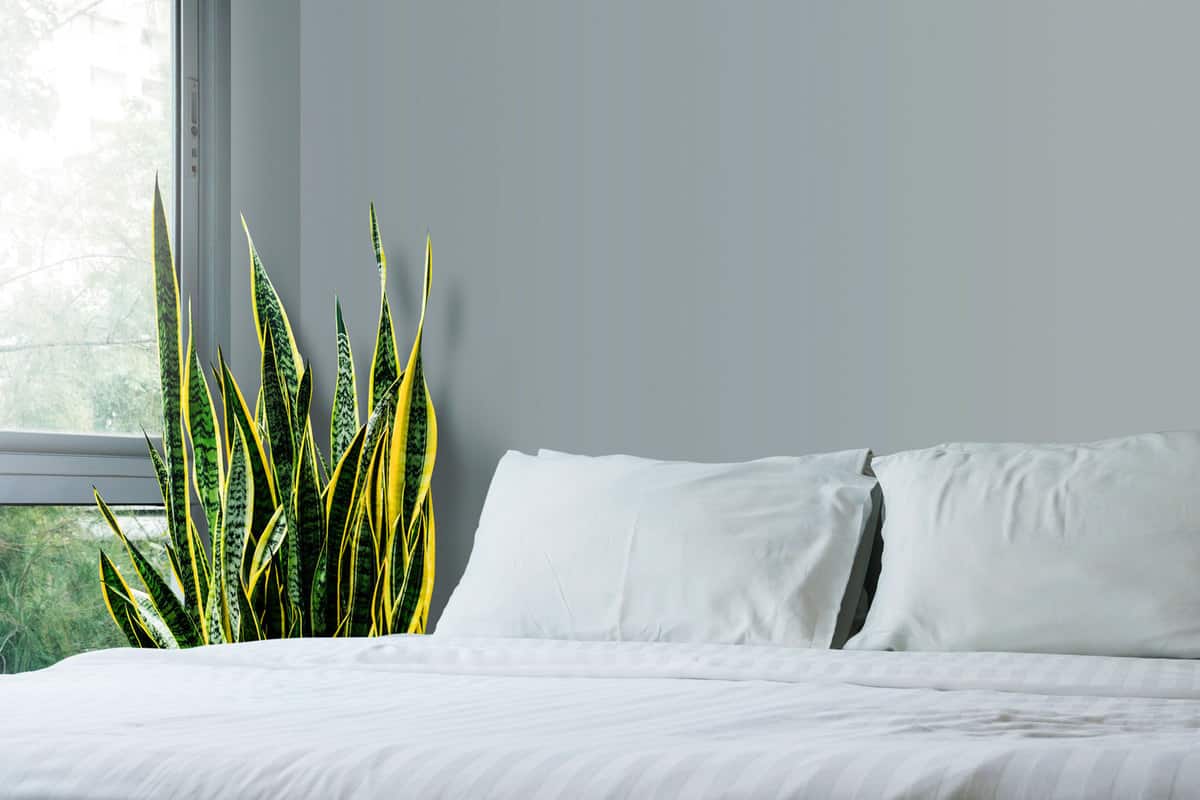Cats are curious creatures. Once you bring one into your home, your space, furniture, and even your plants become theirs to peruse. Unfortunately, there are a number of common household plants that can pose a threat to your cat's health. Is your snake plant toxic to your new cat?
All snake plants, be they sprouts or fully-grown, are toxic to cats. If you're thinking about bringing a cat or kitten home, you'll need to either relocate the snake plant or remove the plant from your home.
Snake plants can pose similar threats to dogs and other small mammals that you might bring into your home. That said, there are ways that you can ensure that both your snake plant and your new pet live in harmony with one another. Continue reading to find out more.

Are Snake Plants Toxic to Cats?

If you have a cat at home, you know the importance of keeping your furry friend entertained. Cats, while low maintenance when compared to dogs, do require frequent enrichment if you want to keep them from ripping up your furniture or interrupting your Zoom calls.
As such, many homeowners choose to invest in cat-friendly plants to keep their pets occupied and entertained. Cat grass, for example, is one of the most common "toys" to make its way into a cat owner's home. Chewing on the grass keeps a cat's digestive system healthy while also keeping the cat occupied.
Unfortunately, if you're not careful or don't plan ahead when shopping for decorative plants, you may end up bringing a plant into your home that could put your cat's health at risk. If your cat chews on a snake plant, for example, you'll need to call your vet immediately. Snake plants can have an immediate negative effect on a cat's digestive system.
Symptoms of Snake Plant Poisoning
Snake plants are bitter to the taste, meaning that your cat is unlikely to take more than one bite of the plant's leaves. Within minutes of swallowing that first bite, though, you may notice your cat suffering from:
- Nausea
- Vomiting
- Diarrhea
- Drooling
Cats who hide these symptoms may begin to exhibit or complain of intense abdominal pain within a few hours after consuming the plant. Long-term symptoms of ingesting a snake plant can include:
- Loss of appetite
- Swelling of the tongue and mouth
Treating Snake Plant Poisoning
You cannot treat a cat's snake plant poisoning without professional guidance. A veterinarian or vet tech will need to help you first induce vomiting or otherwise clear your cat's stomach out after they've ingested the snake plant.
If your cat has taken in the snake plant's toxins, you can expect them to continue exhibiting signs of illness for up to three days after you visit the vet. During this time, you can either take your cat home and provide them with ready access to fluids and privacy, or you can leave your cat with a vet to receive necessary fluids intravenously.
After you return home with your cat, your vet may prescribe them antihistamines to limit the amount of abdominal pain they have to suffer from on a daily basis.
Be sure, upon transitioning your cat back into your home, that you provide them with gentle foods - wet foods, ideally, or softened kibble - so as to bother their stomach as little as possible.
Other Plants To Watch For
Unfortunately, it isn't just the snake plant that can poison your cat. Before you bring a new furry friend home, you'll want to make sure that you've removed all of the following plants from the places your cat can reach:
- Aloe
- Pothos
- Jades
- Philodendron
- Dieffenbachia
- Poinsettia Plants
What Plants Are Safe For Cats?

If you're ready to become a cat-owner, but you're not sure what kinds of plants you can have in your home, never fear. Not all plants are dangerous for cats to interact with. Some of the safest can include:
Ponytail Palm
If you've had a problem keeping plants alive in the past, then a ponytail palm may be your next great gardening experiment. These plants do not require a lot of light, meaning that you can replace your snake plant without causing much of a disturbance in your home's overall appearance.
Do note, though, that your new cat is likely going to play with the fronds, so you may want to have a wand toy or two on hand to serve as distractions.
Air Plants
If you want to hop on board the terrarium craze, then why not invest in an air plant? These plants require little in the way of water and dirt in which to grow. Like more traditional succulents, these plants tend to thrive when left to their own business.
What's more, their small size will make them ideal for storage in unique locations. As such, you can keep them away from your cat, ensuring their continued growth over time.
Calathea Prayer Plant
For a plant that's on the larger side, you can bring home a Calathea prayer plant. These plants mirror snake plants with the stripes they have on their leaves. They are, however, much safer for your cat to consume (not that your cat should! It's better to be safe than sorry, though).
Calathea prayer plants love high levels of humidity. If you're looking, then, for a green addition to your bathroom, or if you live in a humid area, then these plants will make the most of the moisture you're able to share.
Rattlesnake Plant
Not to be confused with snake plants, rattlesnake plants also bear the leaf stripes that distinguish the Calathea family. Like Calathea prayer plants, these plants also enjoy high levels of humidity.
Similarly, they do not require a lot of attention in order to thrive. You can set a rattlesnake plant down in place of a snake plant and see little difference in your home's overall appearance. Your cat will be much safer for the adjustment.
Calathea Zebra
If you're looking for a Calathea that's on the smaller side, then you'll want to consider the Calathea zebra. Once again, you'll be able to enjoy the stripes that are a staple throughout the Calathea family.
These plants are just as easy to take care of as their cousins, and they similarly will not compromise your cat's overall health. Instead, they'll purify the air in your home, making your space more comfortable to live in while providing your cat with a little taste - metaphorically - of the great outdoors.
Hibiscus
Stripes not your thing? Looking for a plant that flowers on a regular basis? A hibiscus plant may be the right snake plant replacement for you. These plants are well-known for their bright blooms and are most commonly affiliated with Hawaiian imagery. As it stands, you can grow a hibiscus plant just about everywhere, provided you have the humidity and temperature to allow one to thrive.
While these plants tend to do best when kept outdoors, they can make welcome additions to your front room, as well. Your cat may try to plant in the potted dirt, but with a bit of conditioning, you should be able to enjoy the plant's flowers and a home free of dirt-covered paws.
Finding Your Perfect Plant
There are several other types of plants that are safe to keep in a home with a cat. If you're not sure where to get started when shopping for a snake plant replacement, don't hesitate to reach out to the representatives at your local nursery for guidance.
Are Snake Plants Toxic To Other Animals?
Snake plants pose a threat to mammals that make themselves at home in your space. Cats and dogs are the most likely to fall victim to the plant's debilitating effects, but the plant's toxicity level is low enough that your pet should only suffer digestive discomfort after eating its leaves.
Rabbits, however, as well as hamsters, guinea pigs, and ferrets can also suffer from digestive problems if they chew on the leaves.
What's The Safest Place To Keep A Snake Plant With Pets?

If you want to keep your snake plant, but you also want to keep your cat safe, you may find yourself faced with a conundrum. Cats, after all, are athletic creatures. Your cat can likely get to all of the high places that you might otherwise use to store your snake plant away.
If you do want to keep your snake plant, you'll need to determine what kinds of boundaries you want to set with your cat. For example, you may be able to keep your snake plant in the bedroom, but only if your cat never joins you in the bedroom. If you can't bring yourself to leave your furry friend out on their own for the evening or the better part of the day, then it may be in your best interest instead to move your snake plant out onto your patio or front porch.
If you've picked out a new location for your snake plant, check out these 9 Snake Plant Arrangement Ideas.
Is It Safe To Keep A Snake Plant In The Bedroom?

As mentioned, you should only allow a snake plant to grow in places where your cat is not allowed. If you can keep your cat out of the bedroom at all hours of the day, then your bedroom will be a safe place for your snake plant to grow.
However, if there is a chance that your cat may slip under your feet in the morning or nose their way into the bedroom during the day, you'll want to explore alternative locations for your plant.
Can You Put A Snake Plant In The Bathroom?
Snake plants, like many other indoor plants, can be sensitive to changes in humidity and temperature. With that in mind, it may not be in your best interest to store your snake plant in the bathroom.
While it's a little easier to keep your cat out of the bathroom than it is to keep them out of the bedroom, your snake plant is not going to enjoy its time in this new location. Snake plants require little water and humidity to flourish in the first place. Over-exposure to high levels of humidity could readily rot a snake plant's roots, causing it to wilt and die.
If you have a bathroom fan that you run while taking showers or baths, a snake plant may fare a little better in a bathroom. When in doubt, though, consider moving your snake plant into an alternative location where it can thrive without putting your cat's health at risk.
In Closing
When you bring a cat into your home, you want to make sure that they're as safe and comfortable as they can be. Unfortunately, some of the plants you already have in your home may not be as cat-friendly as you would like. Snake plants are among the plants that can cause your cats significant health problems if they're treated as an all-out salad bar.
With that in mind, you may want to consider either relocating a snake plant that's been living in a public space or otherwise removing it from your home entirely.






